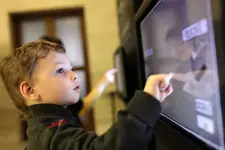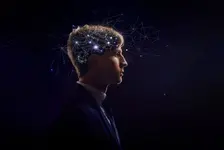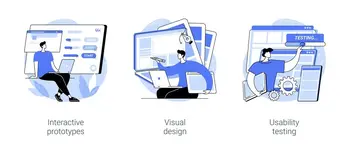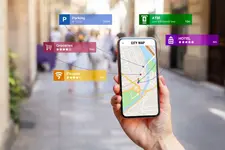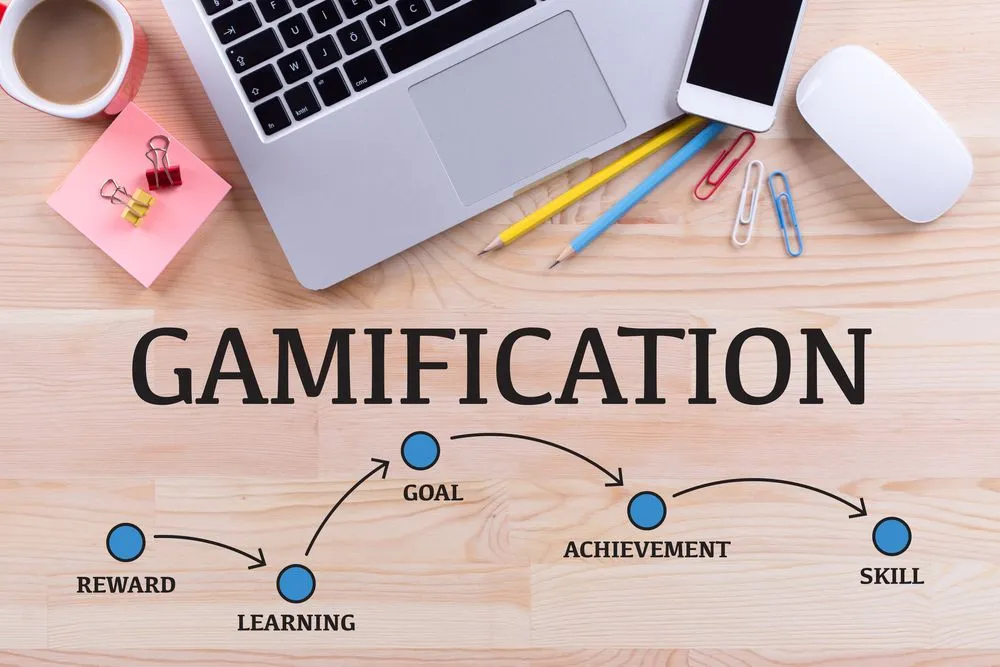
Table of contents
Gamification is a way to make things more fun and interesting by adding game-like elements. Organisations can use gamification to achieve higher retention. This can be used to help people stay motivated and engaged in learning, training, or other activities and increase customer engagement. In fact, gamification is a genuine customer retention strategy.
Gamification can use things like points, badges, leaderboards, and challenges to make tasks more exciting. This can help people stay focused and motivated to keep going. The level of user engagement brought about by the gamification strategy improves the user experience which further leads to customer loyalty.
A study by TalentLMS found that gamification
boosts engagement by 48%
and boosts customer retention rates by 25%. This is because gamification appeals to our basic human needs for mastery, autonomy, and social connection.
When people feel like they are in control of their own learning, get feedback on their progress, and are recognized for their achievements, they are more likely to stay engaged and motivated. Gamification can also create a sense of community and healthy competition, where people can share their progress and learn from each other.
Duolingo
is a language learning app that uses gamification to motivate learners to practice every day. It does this by giving learners points, badges, and streaks for completing lessons. Duolingo has become the most popular language-learning app in the world, with over 500 million users.
Nike's Run Club app
also uses gamification to encourage runners to set and achieve their fitness goals. It does this by giving runners points, badges, and leaderboards for completing runs. Nike’s Run Club has helped millions of people get more active.
These examples show that gamification can be a powerful tool to engage and retain people, while also providing value and enjoyment.
Understanding Gamification

Gamification is when you add game stuff to things that aren’t games. This can make things more fun and interesting, and it can help people learn better. For example, you could gamify your vocabulary class by giving students points for learning new words, or you could gamify your work by giving employees badges for completing tasks. Gamification can be used to increase engagement, motivation, and retention. It can also help organizations drive productivity, learning outcomes, and employee satisfaction. In this section, we will learn about the key elements of gamification and its benefits.
i. Gamification Elements
Gamification is when you use game elements in non-game activities. This can make the activities more fun and exciting, and it can also help people learn and achieve their goals.
Some common game elements that are used in gamification are points, levels, badges, and rewards. Points are awarded for completing tasks or achieving goals. Levels are unlocked as people collect more points. Badges are earned for completing difficult tasks or reaching certain milestones. Rewards can be anything from virtual trophies to real-world prizes.
Feedback is also an important element of gamification. It helps people understand how they are doing and what they need to do to improve. Feedback can be given in the form of progress bars, scoreboards, or personalized coaching.
Here is an example of how gamification can be used in a classroom. A teacher might create a gamified vocabulary quiz where students earn points for correctly answering questions. As students accumulate points, they can unlock new levels or earn badges. The teacher can also give students personalized feedback on their answers. This can help students stay motivated and learn more effectively.
ii. Benefits of Gamification

Gamification is a way to make things more fun and interesting by adding game-like elements. This can be done in many different ways, such as giving points, levels, or badges for completing tasks.
There are many benefits to gamification. For example, a study found that gamified e-learning courses had an
11% higher completion rate
than non-gamified courses. Another study found that gamification can
increase employee engagement by up to 48%
.
One of the key benefits of gamification is that it can increase motivation. When we play games, we are motivated to keep playing because we want to achieve something, such as beating the level or getting a high score. Gamification can tap into this natural desire for achievement and progress, and use it to motivate people to learn or complete tasks.
Another benefit of gamification is that it can make learning more engaging and effective. When educational content is gamified, it becomes more interactive and immersive. This can help learners stay motivated and focused, leading to better learning outcomes.
For example, a gamified vocabulary app might give you points for learning new words. As you earn more points, you can level up and unlock new features. This can make learning vocabulary more fun and rewarding, and it can help you remember the words better.
In conclusion, gamification is a powerful tool that can be used to increase engagement, motivation, and retention. By incorporating game elements into non-game activities, organizations can drive productivity and learning outcomes. The benefits of gamification are well-documented, and it is becoming an increasingly popular approach to employee training, education, and personal development.
Gamified Learning in the Workplace

Gamification is a way to make training more fun and interesting. It uses game elements like points, levels, and challenges to keep employees engaged. Gamified learning has been shown to increase employee engagement, motivation, and knowledge retention.
In this section, we will talk about the benefits of gamified learning in the workplace. We will focus on how it can improve employee training, employee engagement, and the learning experience.
(a) Employee Training
Gamification is a way to make training more fun and interesting. It uses game-like elements, like points and badges, to help employees learn. This makes training more engaging and helps employees learn at their own pace. A study found that gamified learning can improve the completion rate of employee training by 90% . This is because gamification gives employees a sense of accomplishment and motivation to finish the training.
(b) Employee Engagement
Gamification is a way to make work more fun and engaging. It uses game-like elements like points, badges, and levels to motivate people to do their best. Gamification has been shown to increase employee engagement by up to 60% . This is because gamification satisfies our need to feel competent, in control, and connected to others. When people feel engaged and motivated, they are more likely to learn and produce good work. Gamification can help create a more positive work environment and increase productivity.
(c) Learning Experience
Gamification makes learning more fun and interactive for employees. It lets employees learn in a way that fits their learning style, which helps them remember what they learn. Studies have shown that gamification can
increase skill retention by 40%
and
lead to 14% higher test scores
on skill-based knowledge assessments. This is because gamification gives employees a sense of accomplishment and recognition, which motivates them to learn and apply what they know.
In conclusion, gamified learning is a good way to improve employee training and learning experiences in the workplace. It provides a fun and interactive way to learn, which increases employee engagement, motivation, and knowledge retention. By using gamification in the learning process, companies can create a more positive work environment and increase productivity.
Gamification for Behavioral Change

Gamification is the use of game-like elements, like points, levels, and challenges, to make things more fun and engaging. It has been used to help people change their behaviour, especially millennials and Gen Z, who like to play games.
1. Challenges and Instant Feedback
Gamification uses games to help people change their behaviour. Challenges and instant feedback are two important parts of gamification. Challenges make people feel like they are competing and achieving something. Instant feedback tells people how they are doing right now. For example, a fitness app might give you a challenge to run a certain distance or burn a certain number of calories. The app will also tell you how far you have run and how many calories you have burned. This feedback can motivate you to keep exercising.
2. Social Learning
Social learning is a big part of gamification and can help people change their behaviour. It’s when you learn from others by watching them, copying them, or modelling your behaviour after theirs. In a gamified experience, social learning can be done through leaderboards. Leaderboards show how you compare to other players, which can create a sense of community and make you want to keep playing.
3 Rewards and Recognition

Rewards and praise are powerful motivators that can help people change their behaviour. Rewards can be things like bonuses, discounts, or other incentives that people get for reaching goals. Praise can be as simple as a badge or trophy that people get for completing a challenge or reaching a milestone. Rewards and praise can make people feel accomplished and motivated to keep participating.
A scientometric review of gamification for behavioural change found that gamification can be effective in promoting positive behaviours in different areas, like health, education, and environmental sustainability. However, the success of gamification depends on a few factors, like the design of the experience, the effort required to reach the goals, and the relevance of the rewards and praise.
In conclusion, gamification can be a powerful tool for promoting behavioural change, especially for millennials and Gen Z. By incorporating challenges, instant feedback, social learning, and rewards and praise, gamified experiences can create a sense of engagement and motivation that can lead to long-term behavioural change.
Gamification in Corporate Training
Gamification is a way to make corporate training more fun and engaging. It uses game-like elements like points, badges, and leaderboards to keep employees interested and motivated. This can lead to higher employee engagement and retention rates, which can make businesses more productive and successful.
1. Learning Outcomes
Gamification is a way to make corporate training more fun and engaging. By adding game-like elements, employers can motivate employees to learn new information and remember it better. For example, employees can earn points for completing tasks, collect badges for achievements, and compete against each other on leaderboards. A study by IBM found that gamification can increase knowledge retention rates by up to 90% .
2. Employee Performance
Gamification can also make employees work better. By setting clear targets and giving feedback right away, employers can help employees stay motivated and interested. Gamification can also help employees learn new skills and abilities that can improve their job performance.
3. Company Policies
Gamification can be used to make company policies and values more fun and easy to remember. For example, a company could make a game about data security that teaches employees about the importance of keeping company data safe.
Gamification can help employers improve employee engagement and retention rates in corporate training. By making training more fun and interactive, employers can create a culture of learning that helps employees be more productive and valuable to the organization.
Here are some specific examples of how gamification can be used in corporate training:
- Points and badges: Employees can earn points for completing training modules or answering questions correctly. These points can be redeemed for badges or other rewards.
- Leaderboards: Employees can compete with each other on leaderboards to see who can earn the most points or complete the most training modules.
- Challenges: Employees can be given challenges to complete, such as answering a certain number of questions correctly or solving a problem.
- Levels: Employees can progress through levels as they learn more information.
Gamification can be a great way to make corporate training more engaging and effective. By using game-like elements, employers can help employees learn more quickly and retain information for longer.
The Future of Gamification

Gamification is becoming more and more popular as a way to get people interested and involved in different things. It is expected that the global gamification market will grow from $13.26 billion in 2023 to $58.71 billion in 2028 , with a compound annual growth rate (CAGR) of 24.88%. This shows that gamification is a promising tool that can be used to improve engagement and retention in a variety of fields.
i. Global Gamification Market
The global gamification market is growing fast because more and more businesses are using gamification in their work. The market is expected to grow a lot because more and more businesses want to use gamification to train their employees, get customers engaged, and market their products. A report by MarketWatch says that the gamification market in education is expected to grow the fastest during the next few years.
ii. Gamification in Education
Gamification is a way to make learning more fun and interesting. It uses game-like elements like points, badges, and leaderboards to help students stay engaged and motivated. Gamified learning has been shown to be effective in improving cognitive skills, creativity, and critical thinking. A study of gamified learning in higher education found that it improved learning outcomes, engagement, and motivation.
iii. Gamification in the Classroom
Gamification is being used in schools to make learning more fun and interesting for students. Gamified learning experiences can be made for different types of learners. For example, a study found that a gamified physics course helped students learn more and be more engaged than in a regular physics course.
Gamification is becoming more popular and is expected to grow in the future. It is being used in education to improve student engagement, motivation, and learning outcomes. Gamification is proven to be effective and is changing the way we learn and interact with content.
